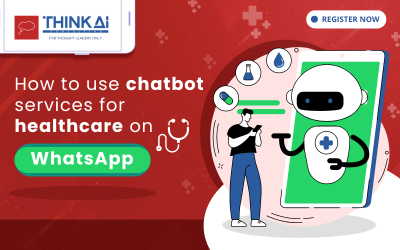We’re on the brink of a big change in biotechnology. Gene editing and artificial intelligence are teaming up to lead this revolution. This collaboration is making personalized medicine much better. What took a long time might soon happen much faster. Even diseases we thought were unbeatable might finally have a solution. The latest technology is now even more advanced and effective. But this change brings new challenges. While AI makes things more efficient, safety is still very important.
Gene editing can target the root of problems precisely and help us improve technologies, which offers a lot of hope. Treatments could become cheaper and better if researchers and companies use AI and gene editing together. This partnership between AI and gene editing could make personalized treatment available to more people. So, let’s explore what this collaboration brings to the table!
Understanding Gene Editing and AI in Healthcare
Gene Editing Techniques
Gene editing techniques, such as CRISPR (Clustered Regularly Interspaced Short Palindromic Repeats) a versatile gene-editing tool that utilizes RNA molecules to guide the Cas9 enzyme to specific DNA sequences. It enables targeted modifications, such as gene knockout, gene correction, and gene insertion, with high precision. This technology has revolutionized the field of genetics and healthcare. It also allows scientists to make precise changes to DNA sequences, offering unprecedented opportunities for treating genetic disorders and developing novel therapies.
Applications of Gene Editing in Healthcare
Gene editing holds immense potential for addressing a wide range of genetic disorders and advancing personalized medicine. Some key applications include:
Treatment of Genetic Diseases:
- Gene editing offers the possibility of correcting disease-causing mutations directly within the patient’s cells.
- Diseases like sickle cell anemia, cystic fibrosis, and muscular dystrophy are being targeted for potential gene therapy interventions using gene editing techniques.
Cancer Therapy:
- Gene editing can be used to modify immune cells, such as T cells, to better recognize and attack cancer cells.
- CAR-T cell therapy, which involves modifying T cells to express chimeric antigen receptors, has shown promising results in treating certain types of leukemia and lymphoma.
Infectious Disease Prevention:
- Gene editing technologies can potentially target and modify host genes to confer resistance to infectious agents, such as HIV or malaria.
- CRISPR-based approaches for disrupting viral replication or enhancing immune responses are under investigation.
The Promise of Genome-Based Therapies
Gene editing and AI are the peanut butter and jelly of genome-based therapies. By combining these two revolutionary yet quite different technologies, researchers have concocted a recipe for medical breakthroughs previously relegated to science fiction.
CRISPR and Computational Models: Better Together
CRISPR-Cas9 (Clustered Regularly Interspaced Short Palindromic Repeats) allows scientists to edit DNA with surgical precision, modifying or replacing disease-causing genes. However, the human genome is unfathomably complex, and determining optimal target sites requires AI’s predictive power. AI algorithms can scan genomes, identify mutations, and model the effects of edits to maximize benefits and minimize risks. This tag-team approach accelerates discovery and helps therapies reach patients faster.
Automating the Tedious Parts
Manufacturing genome therapies is a laborious process with many steps, including engineering cell lines, optimizing bioprocesses, and ensuring quality control. AI thrives on repetitive, data-intensive tasks, so it excels at streamlining production. AI-based platforms can track workflows, adjust parameters, detect anomalies, and predict outcomes. By handling the boring bits, AI lets scientists focus on the fun, creative stuff.
Overall, AI enhances gene editing techniques by improving accuracy, expediting timelines, and reducing costs. Together, these technologies are poised to make personalized medicine a reality, allowing doctors to prescribe tailored treatments based on a patient’s unique genetic profile. Genome-based therapies offer hope for those with rare diseases and few options, demonstrating how AI and CRISPR can team up to advance medicine in ways once confined to the pages of science fiction.
Gene Editing Technologies Enabling Precise Modifications
Gene editing techniques like CRISPR have introduced a new era of precision “molecular surgery.” With CRISPR, scientists can quickly and affordably manipulate the genome by cutting out unwanted genes or inserting new ones.
To put it plainly, CRISPR is a genetic “find and replace” tool. It allows researchers to locate a specific sequence of DNA inside a cell and then cut it out, add a new sequence, or modify it. This unprecedented control over the genome has unlocked promising new avenues for developing treatments for genetic diseases and conditions.
CRISPR’s “search and snip” capabilities rely on a guide RNA molecule to detect the target DNA sequence. The guide RNA then recruits the Cas9 protein, an enzyme that can cleave both strands of DNA at the target location. By supplying an alternative DNA sequence, scientists can then prompt the cell to insert new genetic material at the cut site.
While CRISPR makes gene editing more accessible, that power comes with great responsibility. Modifying human DNA raises serious ethical questions that scientists and physicians must consider carefully before rushing to clinical trials. However, when applied judiciously under strict oversight, CRISPR-based therapies could potentially remedy genetic defects, eliminate disease-causing mutations, and pave the way for highly personalized medical treatments.
AI will be instrumental in helping researchers navigate the complexity of human genomes to pinpoint impactful edits and ensure the highest safety standards. By combining big data analytics, machine learning algorithms, and CRISPR’s molecular precision, we’re entering an era of customized genomic medicine with the promise to radically improve health outcomes and the human condition.
CRISPR-Cas9: A Groundbreaking Tool for Treating Genetic Disorders
CRISPR-Cas9 has revolutionized gene editing, allowing researchers to precisely alter DNA sequences and modify gene function. This cutting-edge tool provides an efficient way to fix mutations that cause genetic diseases. Think of CRISPR as molecular scissors that can cut out faulty DNA and replace it with the correct sequence.
Snipping Out Disease
CRISPR-Cas9 uses guide RNA to direct the Cas9 enzyme to the target location in the genome. Once there, Cas9 creates a double-stranded break in the DNA, disabling the mutated gene. Scientists can then patch the break with the normal version of the gene to restore proper function. This technique holds promise for permanently curing conditions like sickle cell disease, cystic fibrosis, and muscular dystrophy.
A Custom Cure
The CRISPR-Cas9 system can be customized to individual patients, enabling personalized therapies tailored to their unique genetic profiles. By analyzing a patient’s genome, doctors can choose the optimal editing targets and design a treatment plan specific to their genetic mutations and health needs. Personalized CRISPR treatments may help maximize therapeutic benefits while reducing adverse effects.
An AI-Powered Partnership
CRISPR-Cas9 and AI are a match made in scientific heaven. AI algorithms can scan massive amounts of genomic data to predict the best locations for CRISPR to make its incisions without disrupting healthy genes. AI also helps streamline the editing process by designing customized CRISPR constructs for specific mutations. This AI-CRISPR partnership accelerates the development of precision therapies that are safer and more effective.
The Role of AI in Accelerating Genome Therapy Development
Gene editing and artificial intelligence (AI) are a dynamic duo revolutionizing genome therapy development. AI enhances the precision and efficiency of gene editing techniques like CRISPR-Cas9 by pinpointing optimal target sites in the genome and designing customized constructs to modify DNA.
AI-based platforms also streamline the manufacturing process from start to finish. Predictive algorithms select high-performing cell lines for engineering, optimize bioprocess parameters, and analyze quality control data to ensure regulatory compliance. Leveraging AI’s data-driven insights accelerates the timeline, reduces costs, and minimizes risks associated with bringing genome therapies to market.
CRISPR may be a molecular scalpel, but AI is the brain behind the operation. AI tools predict how genetic changes will impact health outcomes and sift through mountains of data to determine the best treatment strategies. Researchers can simulate the effects of various gene edits in silico before performing a single experiment. This dramatically narrows the search space, allowing scientists to focus on the most promising candidates.
On the manufacturing floor, AI monitors bioreactors in real-time, adjusting parameters like temperature, pH, and feed rates to optimize yield and quality. “Digital twins” of the production process help manufacturers refine operations, anticipate failures, and make data-driven decisions. Smart sensors and computer vision also inspect cells and flag quality issues to minimize deviations.
By combining AI’s predictive power and data-driven insights with gene editing’s ability to modify DNA, we can develop personalized genome therapies that are safer, more effective, and accessible to more patients. This synergistic approach is poised to revolutionize the treatment of genetic diseases and transform healthcare as we know it. The future is here, and it’s powered by algorithms and engineered biology working together in perfect harmony.
AI-Driven Platforms Streamlining Manufacturing Workflows
Once researchers have identified optimal gene targets and designed customized constructs using AI, the real work begins. How do we translate these cutting-edge biotech breakthroughs into full-scale production of genome-based therapies? The answer lies in AI-powered platforms built to accelerate and streamline the entire manufacturing workflow.
From cell line engineering to bioprocess optimization, quality control, and regulatory compliance, AI-driven software and robotic systems are transforming healthcare manufacturing.
- Cell Line Engineering: AI helps select the most suitable host cell lines for gene editing and speeds up the screening process to identify high-producing clones.
- Bioprocess Optimization: AI applies data-driven models to optimize media, feeding strategies, and other parameters for culturing engineered cells at maximum yield and quality.
- Quality Control: AI-based imaging and sensors monitor cell cultures in real-time, detecting anomalies to ensure product purity, potency, and safety. AI also facilitates automated QC testing of final genome therapy products.
- Regulatory Compliance: AI-powered document management solutions generate the paperwork required for regulatory approval, including compliant protocols, standard operating procedures, batch records, and other documentation.
While human expertise will always remain essential, AI-driven platforms handle repetitive, data-intensive tasks with superhuman speed and accuracy. This allows researchers and manufacturers to focus their efforts on higher-level critical thinking and decision-making.
Optimizing Cell Line Engineering With AI
Once a target site has been identified within the genome, the next step is engineering a cell line to incorporate the desired genetic changes. This complex process involves designing DNA constructs, transfecting cells, screening for successfully edited clones, and optimizing culture conditions to maximize yield—all of which can be enhanced using AI.
AI-based modeling helps determine optimal DNA or RNA sequences that will generate the correct edit with the highest efficiency and fewest off-target effects. AI can also predict how different constructs may impact cellular health and productivity, enabling researchers to choose designs that balance editing precision and cell line robustness.
After cells have been transfected with the selected construct, AI facilitates high-throughput screening of thousands of clones to rapidly identify those containing the proper edit. Machine learning algorithms can analyze genomic data to detect on-target edits with high accuracy while ignoring random mutations. This helps speed up what was previously a tedious, manual selection process.
Once engineered cell lines have been established, AI continues to optimize the manufacturing workflow. AI-driven platforms can adjust bioprocess parameters like media components, feeding schedules, and culture conditions to maximize cell growth and productivity. AI also enhances quality control by identifying anomalies that could impact safety, purity, or potency.
Overall, AI transforms cell line engineering from a reactionary process into a predictive one, overcoming many of the technical challenges that hinder the advancement of genome-based therapies.
Improving Bioprocess Efficiency with Data-Driven Insights
Gene editing techniques have unlocked tremendous potential for developing personalized genome-based therapies. However, manufacturing these living drugs comes with a unique set of challenges. Complex bioprocesses, scarce resources, and tight timelines often lead to production bottlenecks, increased costs, and high failure rates.
This is where AI comes to the rescue. By leveraging machine learning algorithms and predictive analytics, researchers can gain valuable insights into optimizing workflows and streamlining production. AI-powered platforms can analyze volumes of data to identify patterns, make recommendations, and simulate outcomes. With AI as a “co-pilot,” scientists have a better chance of navigating the winding road toward commercialization.
For example, AI can help determine the optimal cell line and conditions for maximizing product yield. It may suggest modifying media components, adjusting temperatures, or selecting a high-producing clone. AI can also predict how changes might impact growth, quality, and consistency—helping teams make data-driven decisions to improve the process before committing resources.
AI further enhances quality control and compliance. Automated monitoring systems can detect anomalies in real time, trigger corrective actions, and maintain audit trails. This reduces the chance of contaminated or substandard batches, saving time and money.
While AI cannot replace human expertise, it can make bioprocessing smarter, faster, and more efficient. By combining AI’s predictive power with researchers’ knowledge and skills, genome-based therapies have the potential to reach more patients, more quickly and at a lower cost. The future of medicine may very well depend on this synergy between human and artificial intelligence.
Mitigating Risks and Expediting Timelines
Genome editing techniques like CRISPR enable precise modifications to the human genome, opening doors to promising new therapies. However, these advanced technologies also introduce risks that must be addressed to ensure safety, efficacy, and compliance.
By leveraging AI’s predictive power and data-driven insights, researchers can accelerate development timelines, reduce costs, and mitigate risks associated with these cutting-edge treatments.
AI enhances the accuracy and efficiency of gene editing processes in several ways:
- Predicting optimal target sites within the genome based on complex datasets. This helps guide researchers to the most promising areas for modification while avoiding unwanted off-target effects.
- Designing customized genetic constructs to achieve the desired edit. AI models can generate and evaluate millions of possible sequences to determine the optimal configuration.
- Analyzing genomic data to detect unintended edits. By comparing pre- and post-edit genomes, AI algorithms can pinpoint any undesirable changes with a high degree of sensitivity.
AI also streamlines manufacturing workflows, from cell line engineering and bioprocess optimization to quality control and regulatory compliance. Platforms powered by machine learning automate and accelerate many of these steps, allowing researchers to focus on higher-level tasks. Faster development means treatments can reach patients sooner, and reduced costs make cutting-edge therapies more accessible.
Genome-Based Therapies in Healthcare Manufacturing FAQs
So, you’re curious about those futuristic genome-based treatments you’ve been hearing so much about lately. We’ve got answers to some frequently asked questions:
How does AI enable gene editing?
AI helps scientists identify the best locations in the genome to make precise edits using tools like CRISPR. AI models can predict how changes to specific genes may impact health and optimize the design of customized genetic tweaks. AI also helps analyze the huge amounts of data from gene sequencing to pinpoint disease-causing mutations.
How is AI transforming biomanufacturing?
AI streamlines the complex process of engineering cells and optimizes how they grow and multiply. AI-powered platforms can automate bioreactor control, optimize media and feeding strategies, monitor cell health, and maximize yield—helping companies scale up production. AI also enhances quality control by detecting anomalies and contaminants in cells, raw materials, and final products.
When will I be able to access these therapies?
AI-enabled gene and cell therapies are already emerging, with the first FDA-approved treatments for certain cancers, blindness, and other disorders. Many more are in clinical trials. While AI can accelerate development, rigorous testing is still needed to ensure safety and efficacy. The cost of these customized treatments also remains high, though AI may help reduce expenses over time through optimized processes and scaled production.
What’s next for AI in genome engineering?
AI will continue to enhance the discovery, design, production, and delivery of genome-based treatments. In the coming decades, AI could help realize the promise of personalized medicine through therapies tailored to individuals based on their unique genomic profiles. AI may also expand access to these revolutionary treatments, bringing hope to patients around the globe. The future is bright for this synergistic partnership between AI and gene editing.
Conclusion
So, take it from me, this genome and AI tag team’s got game-changing potential. By teaming up, they can crank out customized genomic therapies lickety-split. We’re talking streamlined manufacturing with boosted speed, precision targeting, and mega data gains. Risks plummet as costs nosedive.
It’s a win-win for pushing research into the clinic at warp speed. And that spells tailored treatments with our names on ’em – safer, cheaper, and way more effective. Pretty soon, these genomic wheeler-dealers could just hand us the keys to personalized medicine and revolutionize how we treat what ails us.
Ready to stay ahead of the curve in the world of personalized medicine and genomic advancements? Subscribe to my LinkedIn Newsletter for exclusive insights on the game-changing synergy between genome sequencing and AI. Get ahead in safer, cheaper, and more effective treatments. Join me in revolutionizing healthcare!

Empowering Healthcare & Smart Manufacturing CXOs | Transforming Challenges into Growth Opportunities with Data-Driven AI Innovation | Microsoft Gold Partner with 30+ years in Data and AI Strategy | #Inc5000 Honoree




